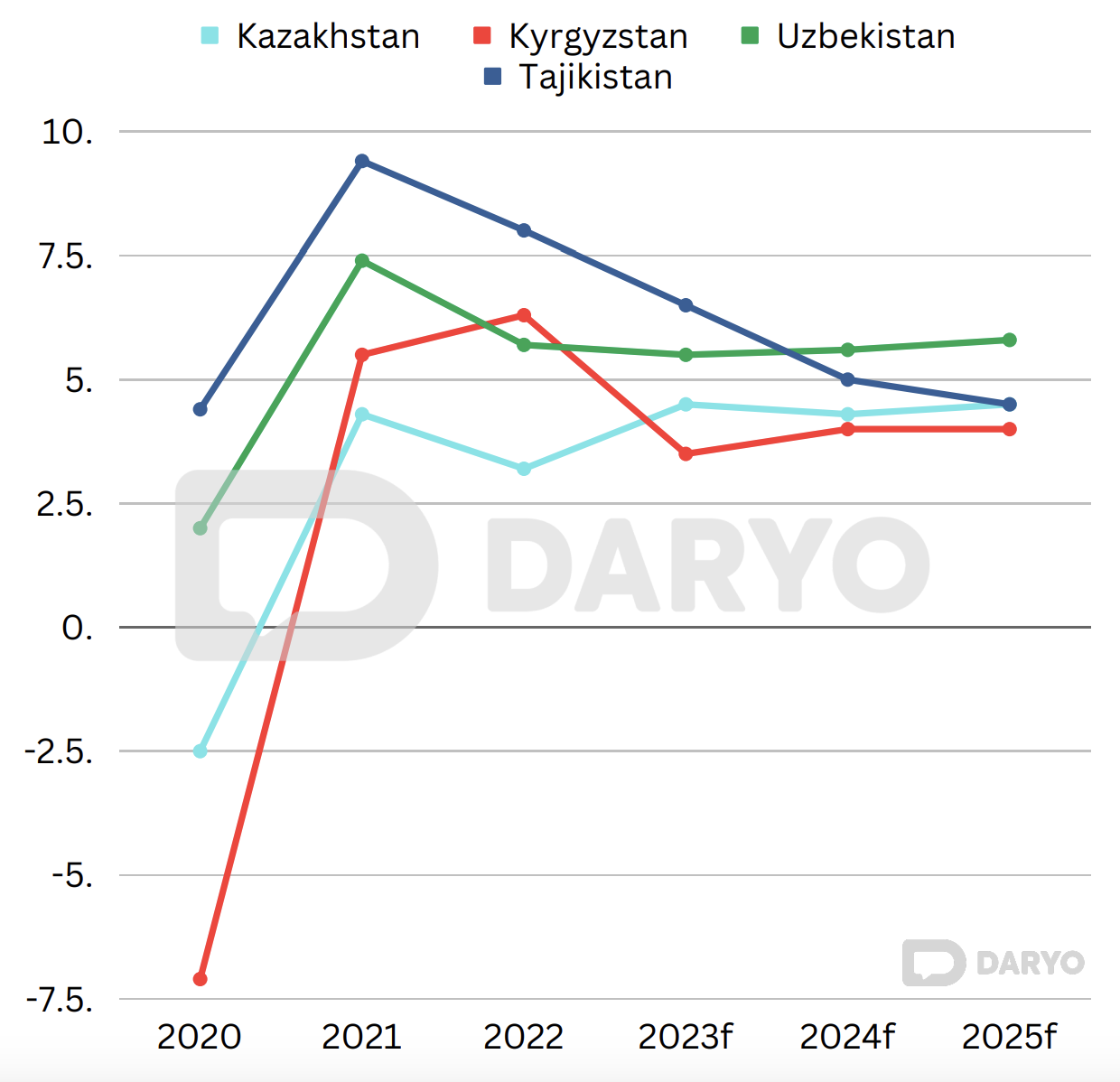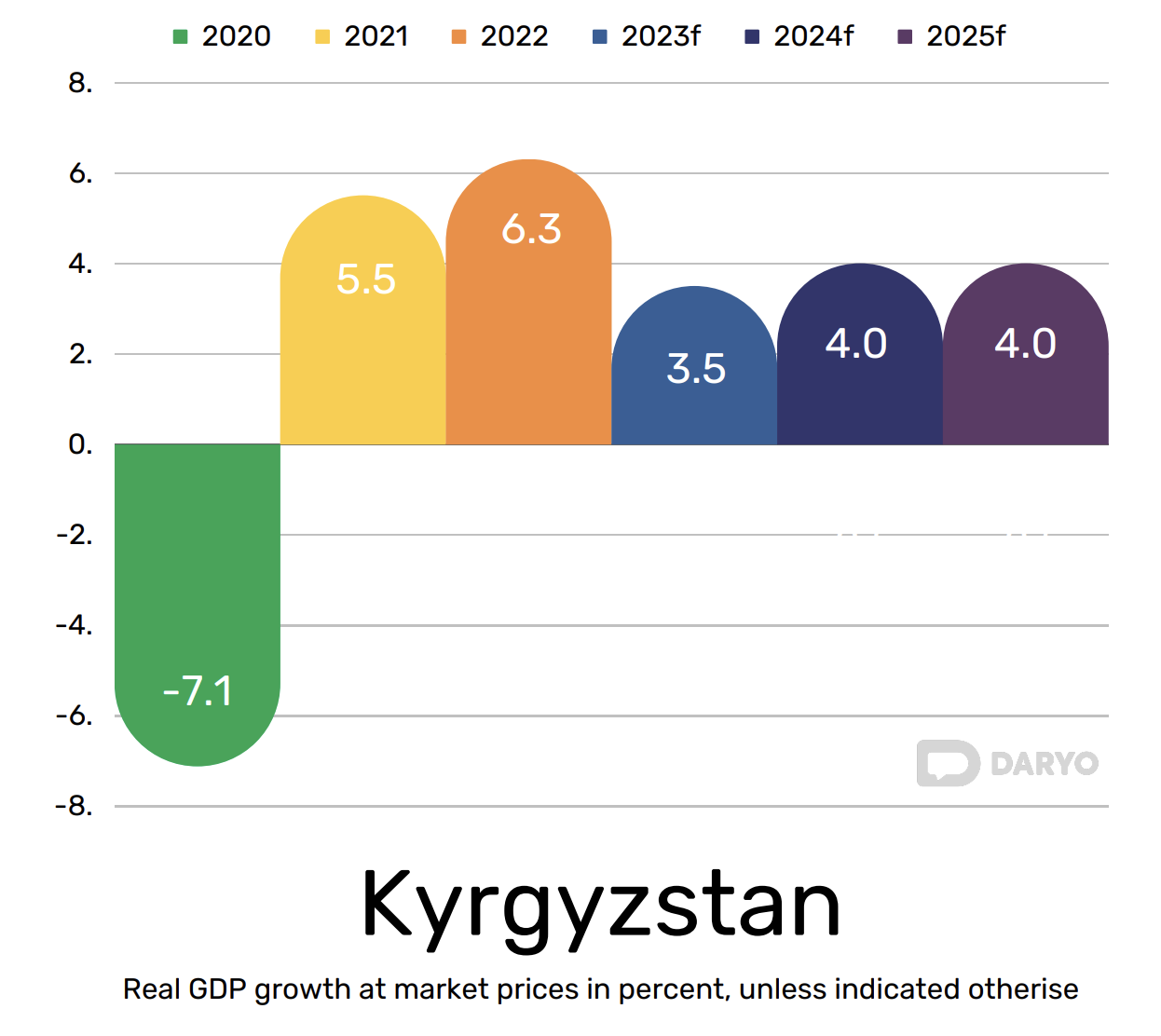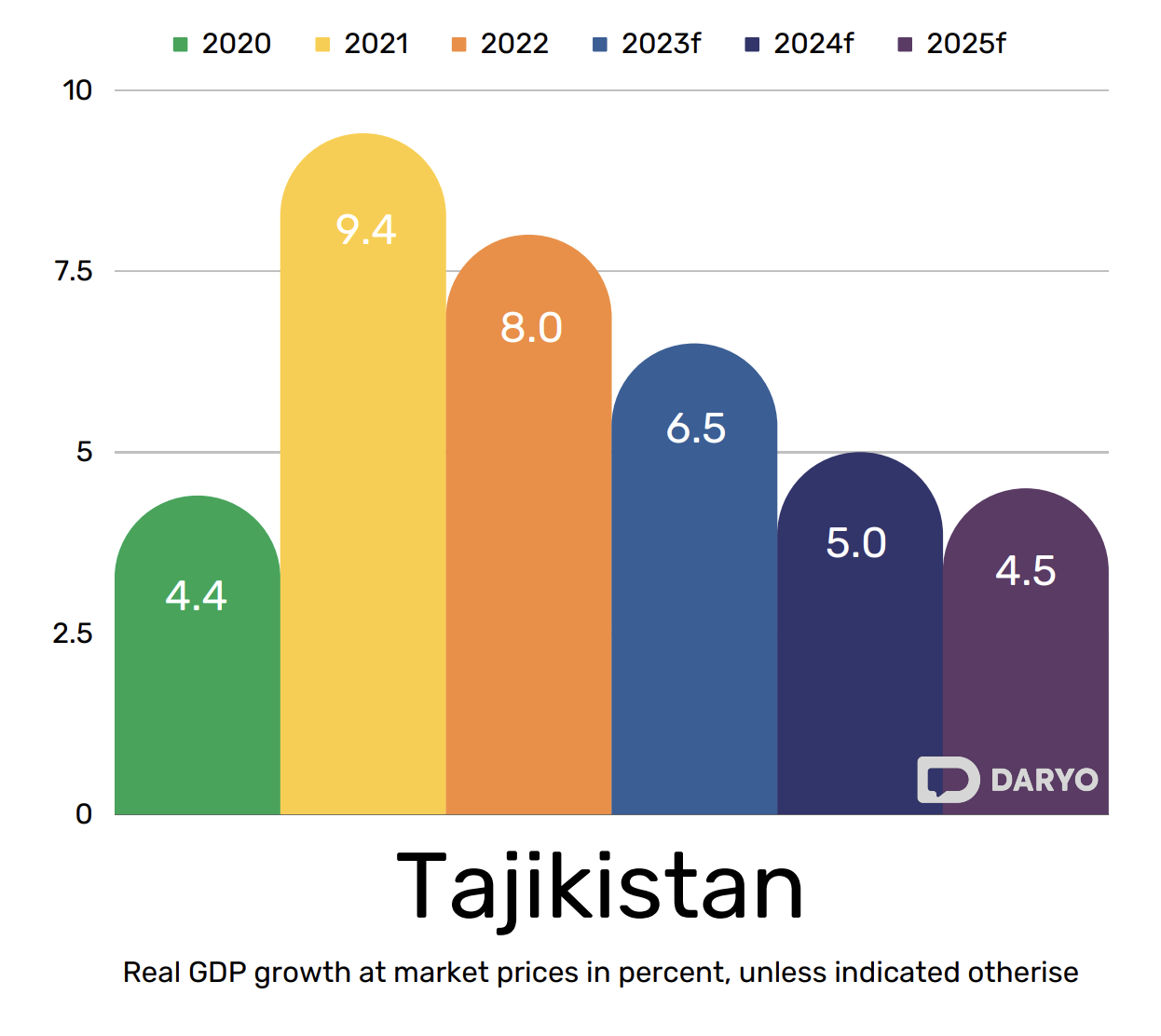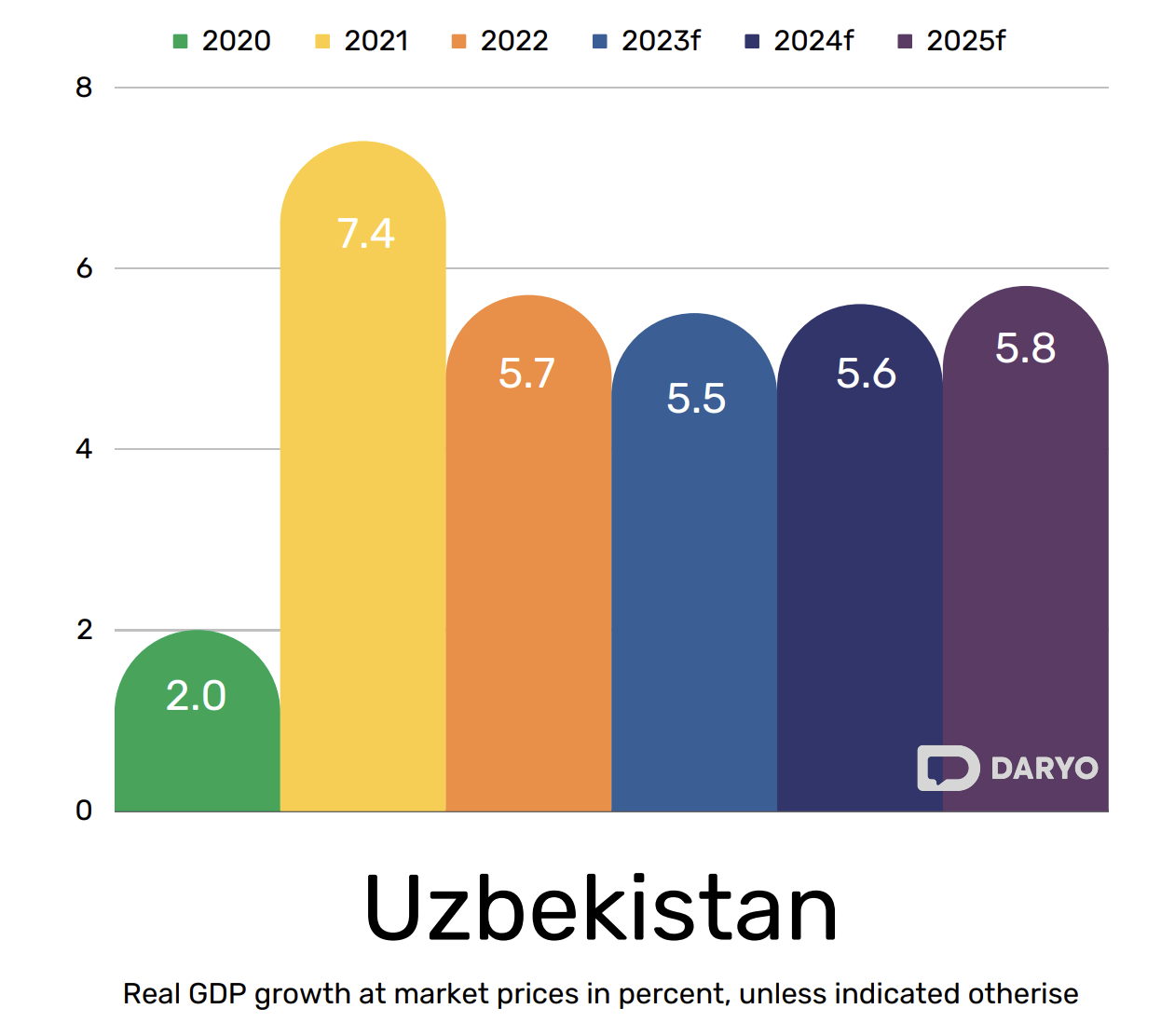In a recent report released by the World Bank titled 'Europe and Central Asia Economic Update: Sluggish Growth, Rising Risks', Central Asia, a region often overshadowed by its larger counterparts, has showcased a remarkable resilience and growth trajectory from 2020 to 2025. The economic performance of major countries like Kazakhstan, Kyrgyzstan, Tajikistan, and Uzbekistan indicates not only recovery from the effects of the global pandemic but also a forward momentum in terms of development.

Kazakhstan
Design by Tawney Kruger
Having faced a decline of -2.5% in 2020, Kazakhstan's real GDP growth made a commendable rebound in the subsequent years. With an impressive growth rate of 4.3% in 2021 and 3.2% in 2022, the projections for 2023, 2024, and 2025 stand at 4.5%, 4.3%, and 4.5% respectively. Notably, the forecasted growth rates have seen a positive adjustment from the previous projections made in June 2023, showing an increase by 1.0% for 2023, 0.3% for 2024, and 0.9% for 2025.
Kyrgyzstan

After a substantial dip of -7.1% in 2020, Kyrgyzstan displayed a promising upward trend with growth rates of 5.5% and 6.3% in 2021 and 2022. The forecasted growth for the years 2023 to 2025 is pegged at 3.5%, 4.0%, and 4.0%. These projections remain consistent with the numbers predicted in June 2023, showing stability in the nation's economic progress.
Tajikistan

Tajikistan remained an outlier in 2020, registering a growth rate of 4.4% during a globally challenging period. The upward trajectory continued with growth rates of 9.4% and 8.0% in 2021 and 2022. While the growth is expected to temper slightly in the coming years, projections for 2023, 2024, and 2025 remain robust at 6.5%, 5.0%, and 4.5% respectively. These figures are in alignment with the June 2023 forecasts, indicating steady economic management.
Uzbekistan

Uzbekistan, showcasing positive growth amidst global economic challenges, recorded a 2.0% growth in 2020. The growth momentum continued with rates of 7.4% and 5.7% in 2021 and 2022. The forecasts for the years 2023 to 2025 are slated at 5.5%, 5.6%, and 5.8%. It's noteworthy that the projections for 2023 and 2024 have seen a slight uptick from the June 2023 predictions by 0.4 and 0.2 percentage points respectively.
Central Asia's Economic Growth in the Context of Europe (2020-2025)

The graph illustrates the economic growth trajectories of various regions within Europe and Central Asia from 2020 to 2025. Central Asia's growth trends, when juxtaposed with its European counterparts, offer some significant insights:
1. Strong Rebound in Central Asia: Central Asia, as a region, showcased commendable resilience. After a contraction in 2020, it exhibited a robust recovery in the following years. By 2025, the region's growth is anticipated to stabilize around 4.8%, which is notably higher than most European regions.
2. Central Asia vs. Major European Economies: When comparing Central Asia's performance to major European economies like Poland, the Russian Federation, and Turkey, Central Asia demonstrates a more consistent and steady growth pattern. While countries like Turkey witnessed a remarkable spike in 2021, Central Asia's growth appears more sustained over the period.
3. Eastern Europe's Struggles: Eastern Europe, especially when excluding Ukraine, experienced significant volatility, with a notable contraction in 2022. In comparison, Central Asia's economy remained on a more even keel, underscoring its economic resilience.
4. Central Europe & Western Balkans: Both these European regions, despite showing a recovery post-2020, have growth forecasts that lag behind Central Asia's by 2025. Central Asia's consistent growth trajectory outpaces these regions, especially in the latter forecast years.
5. Projection Revisions Favor Central Asia: The growth forecasts for 2023 have been adjusted upwards for most regions, but Central Asia stands out with a significant positive revision. This upward adjustment highlights the increasing optimism about Central Asia's economic prospects compared to several European regions.
Central Asia's economic performance from 2020 to 2025, when compared to various European regions, showcases its impressive resilience and growth potential. While Europe witnessed varied recovery trajectories with significant disparities between regions, Central Asia maintained a consistent and promising growth rate, emphasizing its emerging economic significance in the broader Eurasian context.
Follow Daryo's official Instagram and Twitter pages to keep current on world news.
Comments (0)